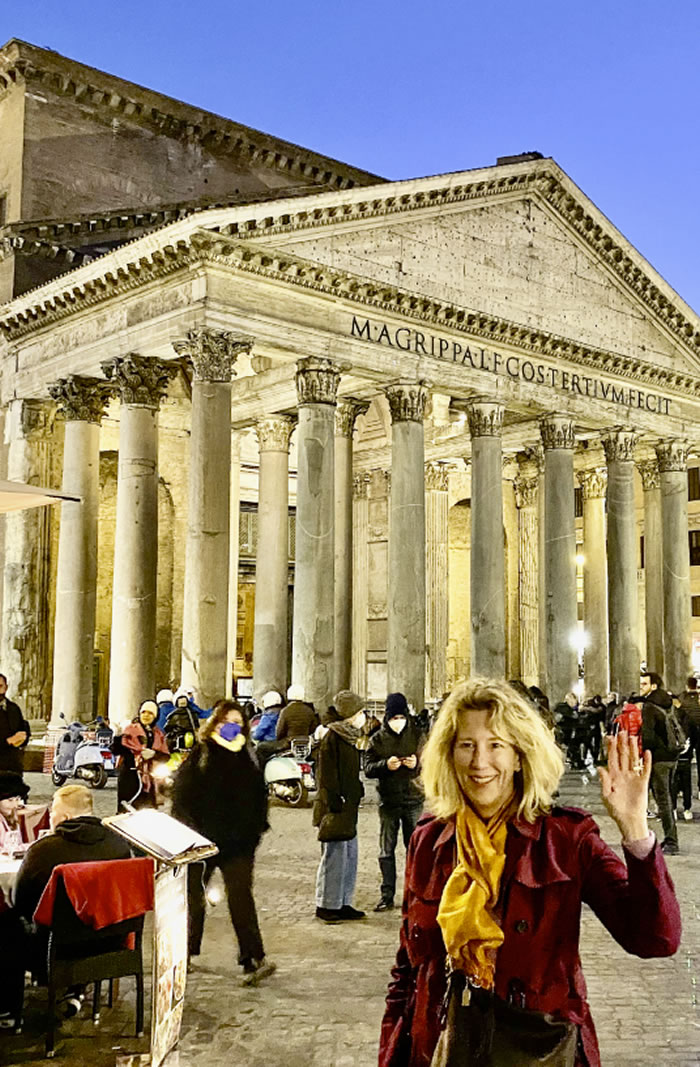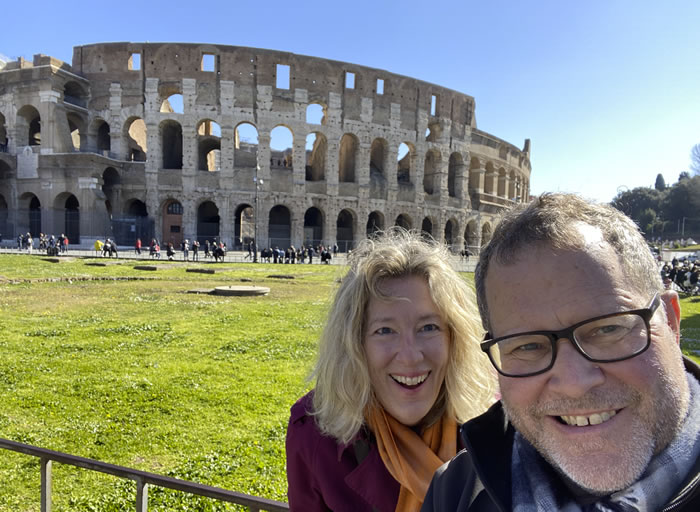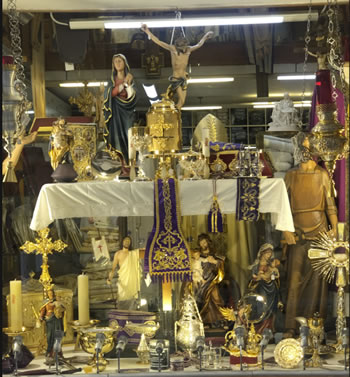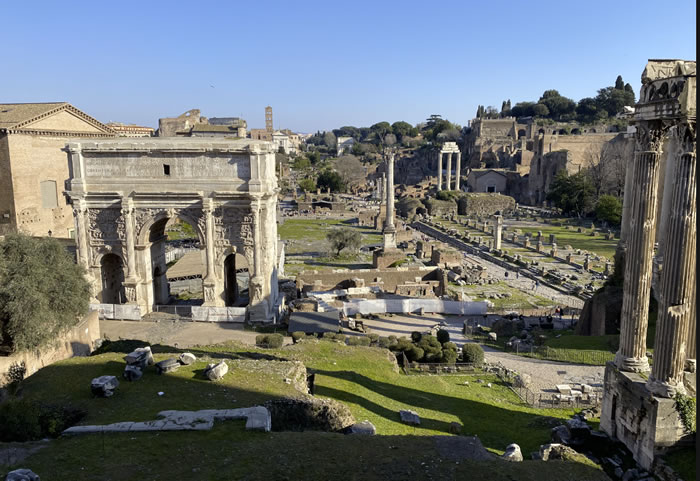SECURITY THREAT ON-BOARD
With the constantly-changing Covid protocol and paperwork, the planning for this trip was our most complicated ever (not that I’m complaining)
In the weeks prior, both Italy and France demanded full vaccination proof, including boosters done within the last 6 months, which we barely made at 5 months. They also had some of the strictest testing possible. You needed your test done within 24 hours before arrival in Italy, which proves tricky when it takes nearly that long to make the journey. You had to show your testing results at initial airport check-in and not max out by the time you actually reached Italy.
Add to that, Delta repeatedly altered our flights, never to our benefit. We originally booked Portland to Amsterdam and then onto Rome, but Delta added Seattle to the mix and elongated our layover time in Amsterdam such that we’d blow beyond 24 hours. I had to change flights again just to meet the time restriction.
We reserved an airport hotel so we could do an observed Covid test in our room at 6:30 AM before checking in for our flight. Then we’d go to the tent outside the airport for another test to give us more than 45 minutes of wiggle room upon arrival in Italy. Two days before our trip, Italy and France dropped their testing requirements which simplified our trip and left us with several paid-for but un-used tests.
Jim filled out a bunch of Covid forms online to get our necessary travel bar codes. We paid $39 each to upgrade our PDX to SEA flight just to get in the first-class check-in line to ease verification of all of our paperwork and codes.
We had a tight layover in Seattle and reached the gate moments before boarding. Our layover in Amsterdam was 3 hrs, 45 min, so I told Jim, “Once we get on this flight, smooth sailing!” I settled in for an in-flight “Friends” marathon.
After reaching cruising altitude, we heard screaming from first class. It sounded like a child, so I wasn’t that concerned. Later I learned the screamer was a thirty-something, bi-polar, Middle Eastern woman. I could see the frenzied action up the aisle from our seats. Flight attendants surrounded her and requested a doctor over the intercom for their “medical emergency.”


Turns out the woman had snuck up from our economy comfort section into a vacant first-class pod. When flight attendants requested she return to her section, she went ballistic. Lunch service screeched to a halt before reaching us, mid-chicken entree.
A few minutes later, they escorted her to the row directly in front of us where they offered her oxygen, but she declined, still argumentative and agitated. I wasn’t keen having her sit within thrashing range, but soon they deposited her back to her original seat next to her male companion in the rear corner of our zone.
Flight attendants continued hovering around her and running up and down the aisles. Next thing we knew, the captain announced we had a “security situation” on-board and needed to return to Seattle. We had flown over an hour at this point. Passengers groaned.
Later I heard a flight attendant explain that they were legally bound to abort the flight, they had no choice. I can only assume the woman must have threatened the crew for daring to dethrone her from first class. They never disclosed the threat, but something as veiled as “You’ll regret this” would certainly have pulled the plug.

We hovered somewhere over Spokane but our huge plane may have been too much for their airport runway. And Canada surely wouldn’t have wanted our psychopathic passenger. Or perhaps we needed to return to Seattle for their big guns of aviation security.
We each had our own concerns. How long would we be on the ground in Seattle? Would our flight crew time out and the flight get cancelled? Would we miss our connections in Amsterdam? The pilot mused aloud how The Netherlands still required Covid testing and nobody could exit the airport doors in Amsterdam otherwise. Surely we had as many issues as the number of passengers on the plane.
The screamer had mellowed by the time we landed and officials promptly ushered her off with minimal drama. She probably realized her gig was up and whatever awaited outside the plane door wouldn’t be so fun anymore. Instead of getting promoted to a first class pod, she faced an upgrade to her own airport detention cell.
We sat on the ground for about an hour and when we started up again, they had to replay our safety video. Nobody cared; we were just relieved to get back in the air again. Jim and I hadn’t eaten for about nine hours when I remembered my emergency stash of peanut M & M’s in my carry-on bag.
Landing in Amsterdam, instead of our long layover, we had 30 minutes, including passport control. We fast-passed through immigration once I flashed our ticket indicating our flight departure in 15 minutes. A reader board originally directly us to an incorrect, far-flung gate but we eventually found the right one after asking for help. Our boarding time magically extended ten minutes, likely for us and a couple other passengers from our delayed flight. We marathoned through the airport, Jim hauling our heavy carry-on bags. He urged me to sprint ahead to beat any gate shutting.
Gasping in my mask, I neared the gate, empty except for KLM staff. An attendant cried out, “Are you Jean Southworth?” clearly waiting for us.

I scrambled to dig out all our paperwork. “Take a breath,” they assured, “everything’s fine now,” as Jim pulled up the rear. I imagine they feared one of us would suffer a coronary and didn’t want that situation on their hands, too.
Our bags didn’t make our flight but they arrived on the next one—ironically the original flight I’d changed to meet the 24 hour testing rule. The lost baggage helper knew all about our flight and its “story,” as she called it.
While waiting for our luggage to appear, I checked my phone and caught up with my women’s Bible study text thread. While we were airborne, a nuclear fire in Ukraine threatened annihilation of Europe and possible evacuation of the continent. We had no idea. My ladies had been praying for our safety as we crossed the Atlantic. By the time I read their messages, the fire had been extinguished.
ROME
We’re back in Rome for the first time since 2008—Jim’s and my first overseas trip together, the one that started it all.
We figured we’d find empty streets and have the city largely to ourselves, but wrong. We encountered no foreign tourist groups and very few non-Italians, but Rome still rocked like the first fake summer day in Oregon.

I wondered, Who were all these people in Rome during a pandemic on the brink of World War III?
- Students. We spotted several educational groups. I chatted with some young women at the Borghese Gallery on a semester study abroad, interior design students from a university in the mid-west. They clutched sketch books. Theirs was the second group since Covid. In Santa Maria Maggiore Basilica, I watched a large group of students file into the far end of the massive church, many carrying similar sketch pads. I approached one of the women and asked if they were university students. She said that no, she was a chaperone and the students were middle schoolers, but she’d have to pass onto them that they were so well-behaved that somebody mistook them for university students. I looked more closely and they indeed, appeared much more middle school-aged than college, even with masks on. I complemented her for her students’ mature behavior.
I asked where they came from and she said New York. Later I noticed that all the students were boys, and they continued with their impeccable behavior, which blew me away because I’ve dealt with packs of middle school boys and this was exactly not how they’d have acted. I imagine they were an elite all-boys prep school, sons of Manhattan’s upper-crust. Who else could or would send their 12 and 13 year old boys overseas during a pandemic and an international war crisis?
- Italians We've seen and heard nearly 100% Italian speakers everywhere—in museums, restaurants, transportation, you name it. These people suffered amongst the first and worst of Covid; today they rejoice at lowering numbers and loosening rules. I won't forget those videos of Italians singing together from their terraces during lockdown. I can only imagine the trauma these highly-social people must have suffered, trapped in their tiny urban apartments all day. I see why they now flood the streets and fill the restaurant tables and send their school children on field trips. Jim echoed my thought that it wasn ’t annoying to run into crowds when you see them made up almost entirely of Italians.
- Nuns Apparently Italians still consider the nunnery an excellent career choice for young women. We stumbled upon a church near our hotel called Chiesa di Santa Brigida where convent nuns in full habits sing evening vespers. Novitiate nuns wear white habits and more senior ones, black. White halos with red dots secure their veils. Prospective nuns, heads uncovered, wear bulky “I’m off the market so don’t even think about it” beige sweaters and calf-length gray skirts. We returned a couple days later for more of the soothing singing. In addition to the churches, we encountered pairs of race-walking nuns in various habit flavors roaming Rome, some on pilgrimages, some stationed locally. Tip: To cross a street in Rome, find a nun and follow in her wake; drivers who stop for nobody else still brake for nuns.


- Us Our first overseas trip together 14 years ago to Rome felt like a college preview class of art history and western civilization, a puzzle packed with new and complicated material. In our journeys since, we’ve jumped in deep and veered down rabbit holes. Today we complete a review course in Rome where most of the pieces fit together in ways I never knew possible, like old academic friends.
Encountering today’s Romans:
- Outside the Baths of Diocletian a scammer bee-lined for us, clearly thrilled at the prospect of American victims, finally. She cried, “I’m safe! I’m not a terrorist!” Something gets lost in translation here as mention of that word hardly reassures Americans. We responded with a firm nasal “NO!” which generally does, and did, the trick.
- For dinner we returned to the Ponte e Parione, a family-run restaurant kitty-corner from our hotel. On this second visit, waiter Andrea remembered us as “the Oregon people.”
“I love Nike,” he explained.
Tonight Andrea told us about the ravioli special, truly something special because his sister, the pasta maker, just informed him that she had finished making ravioli for the week and that was it because it involved too much work. She had just one more serving of spinach and cheese ravioli available, which we snapped up.
We decided to reserve again for Tuesday and Andrea pulled out his big appointment book. We discussed the truffle dish we needed to try next time.
“I’m not going to be here on Tuesday, so I’m going to write down that you’re my friends and you’ll want the fetticini turtufo bianchetto,” Andrea said.


